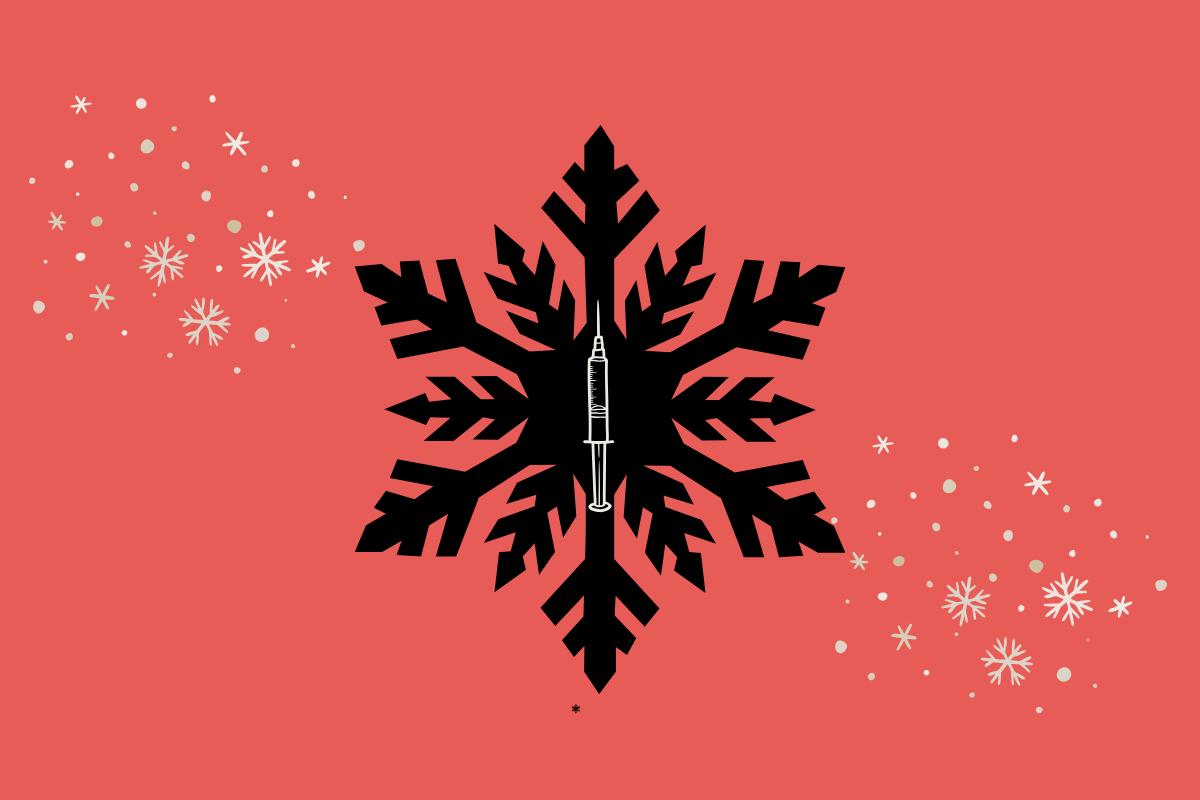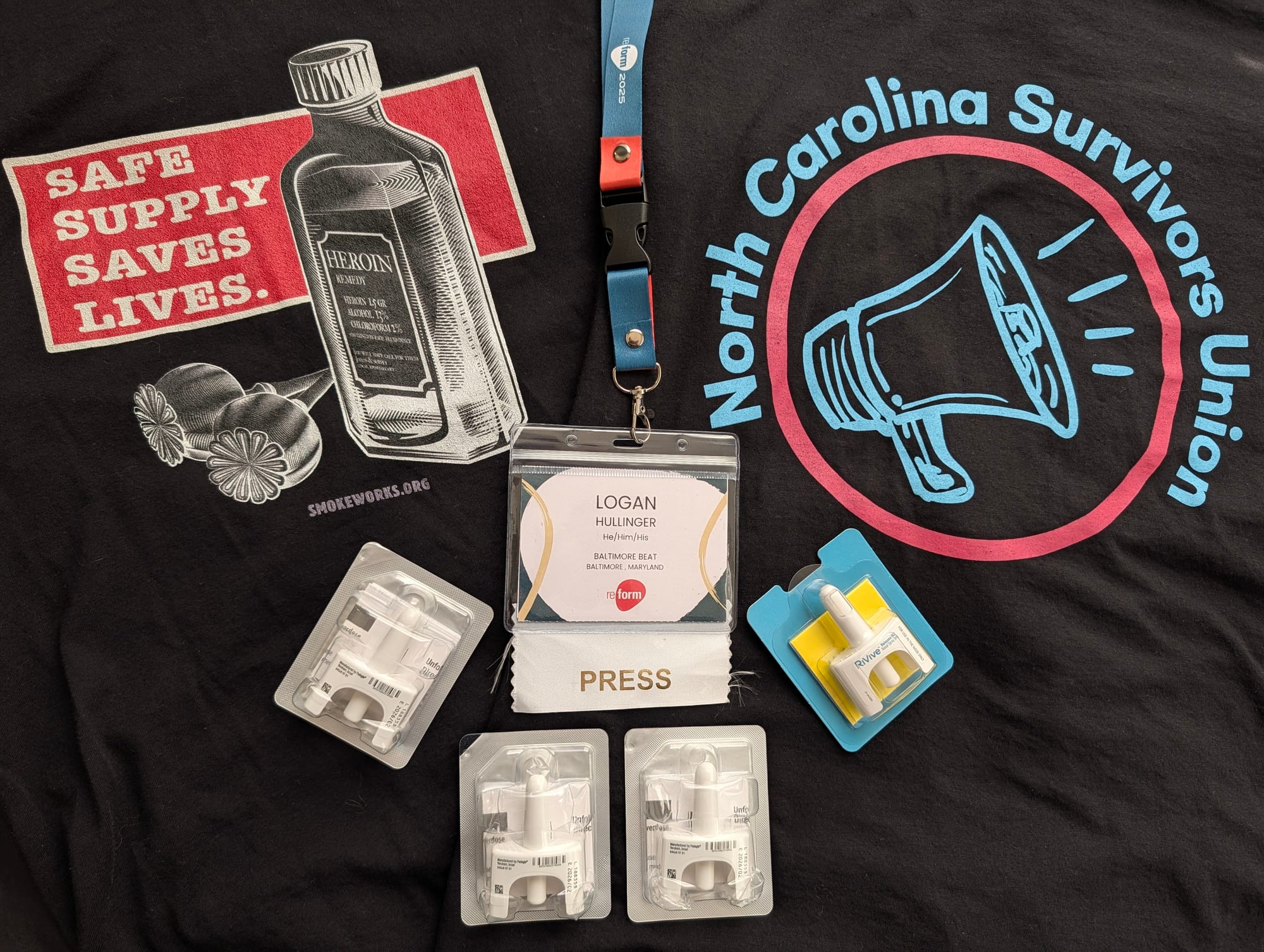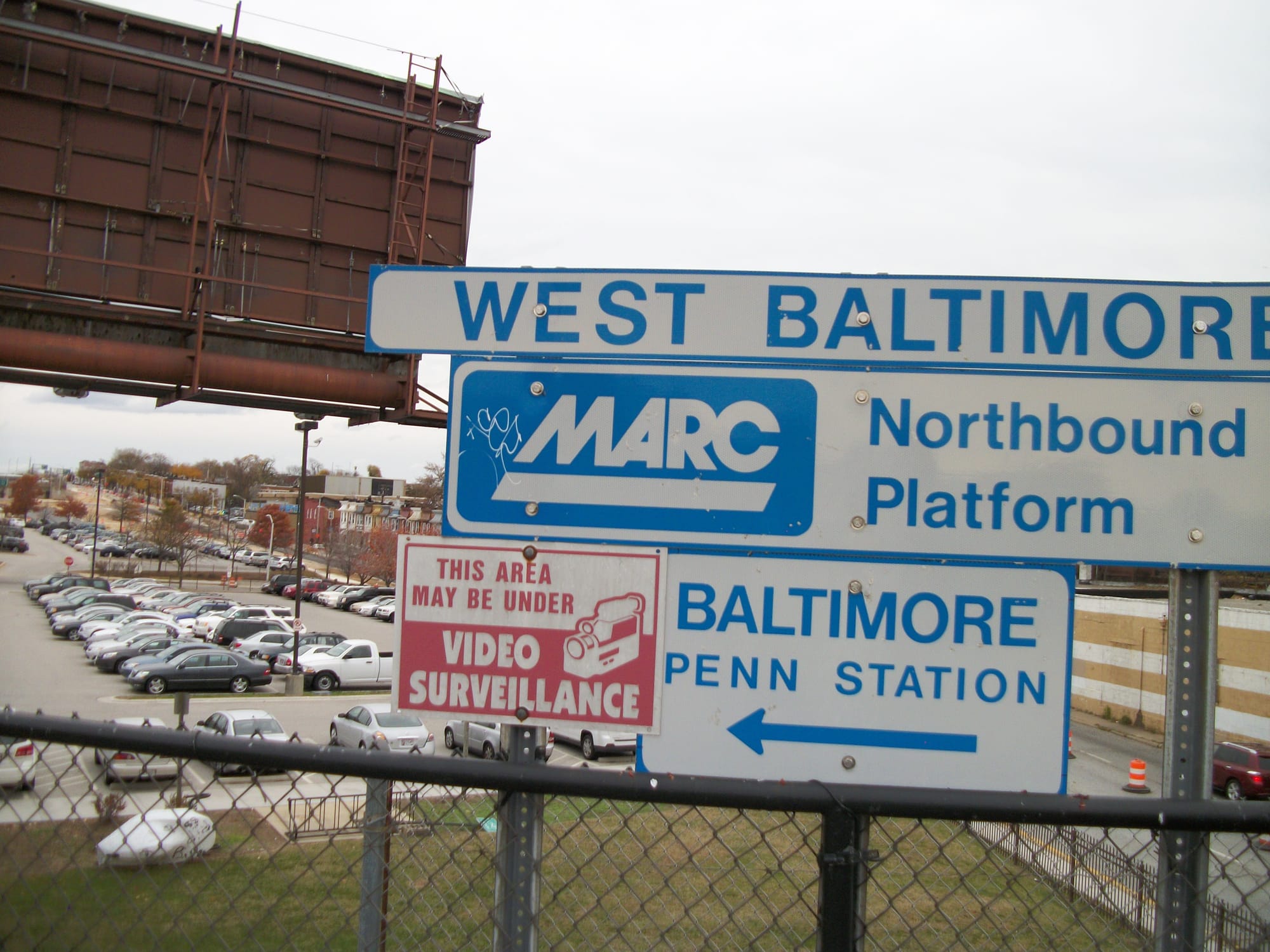
This week marked the inception of long-overdue public discourse on Baltimore's overdose crisis. Yet that transparency also unearthed the stigmatized light in which many residents view those who use drugs — a mindset that was reinforced as local media fomented chaos and sensationalized a recent spate of overdoses.
On Wednesday, the Baltimore City Council held its first public hearing on the city's game plan to combat the overdose crisis after similar hearings in the past year were cancelled under pressure from Mayor Brandon Scott and his administration. Between passionate calls from harm reduction activists and discussion about ongoing overdose prevention efforts, Morrell Park residents fulminated against the "infestation" of "addicts" and "druggies" in their neighborhood, describing the "filth" that people who use drugs have brought to their beloved community in Southwest Baltimore.
"I just want to clarify, if we can say 'addicts' or 'persons experiencing drugs..." said Councilwoman Phylicia Porter, interrupting one of the women to clamp down on the use of stigmatizing language.
While the chair of the Public Health and Environment Committee's attempt to bring decorum to the discourse is appreciated, she didn't get it quite right, either.
As those in the harm reduction community know, words matter. That's especially true when speaking about a population that's been demonized by society and the media for decades. The type of language used at the hearing, including the word "addict," removes the humanity from people who use drugs and reinforces the notion that drug use is a moral failing.
Despite the severity of Baltimore's crisis, that language has remained rampant.
You'll read it in the headlines: Baltimore is dealing with an "addiction crisis," and "opioid crisis" or, as Porter described it at the beginning of the hearing, an "opioid addiction crisis." This language, whether from city officials, residents or the media, can stem from either ignorance or malice.
But make no mistake: This is an overdose crisis — and it's a crisis caused by more than a century of prohibitionist policies and fueled by the relentless War on Drugs.
Those who are dying of overdoses, a disproportionate number of whom are older Black men, are victims. Any phrasing or framing implying otherwise only perpetuates harmful stigmas that distract from decades of policy failures.
In light of the ignorance on display this week, it's worth noting the "Don't Be a Copagandist" style guide from Interrupting Criminalization, a self-described movement resource hub.
"Don't Equate Drugs with Harm," instructs one of the sections in the guide.
"The much-used phrase 'opioid epidemic' assumes that opioids themselves are the problem. In fact, the problem is overuse and misuse of a type of drug that is also beneficial and life-changing for many people, especially those with chronic pain. A more accurate phrase here would be 'overdose crisis,'" the guide states.
"Similarly, a lot of news reporting implicitly or explicitly equates overdose with addiction, even though people who overdose may be recreational or occasional users and not necessarily addicted. Reporting should also be careful not to equate drug use while pregnant with harm to the fetus, focusing on specific evidence rather than generalizations."
These rules seem simple enough to follow, and they rightfully call for the humanization of those who use drugs after decades of demonization.
Unfortunately, this week offered a stark reminder that the media not only amplifies stigmatized language but also capitalizes on the overdose crisis, fanning the flames of the chaotic public health catastrophe.
Less than 24 hours after officials and residents spoke of the death and sorrow the crisis has brought upon the city, tragedy struck: There was a mass overdose event in Penn North.
In an incident seemingly caused by an abnormally potent batch of synthetic opioids — fentanyl is to be expected in the local drug supply, but more powerful opioids and a variety of contaminants have become more common — nearly 30 people in varying conditions were hospitalized.
Thankfully, no one died. Harm reduction workers with the city and local nonprofits were able to rapidly distribute naloxone and other supplies, offering a prime example of why compassionate care for drug users is so important.
However, as I stayed back to avoid contributing to the chaos and allow harm reduction workers to do what they're trained to do, the local media swarmed the neighborhood. Shortly thereafter, one reporter spread rumors about antifreeze in the drug supply on social media; others penned sensationalized pieces in what are supposedly respectable publications.
My sources within the harm reduction movement, in addition to some city officials, voiced frustrations to me about the media's handling of the incident. Their concerns were well-warranted.
"Mariah Carey’s 'Hero' was playing loudly from a speaker. A woman was seen screaming that she is 'never coming back to Baltimore again,'" the Baltimore Banner reported, ludicrously describing a scene where people were transported to the hospital on gurneys, some in critical condition.
The Banner later deleted that excerpt from the article.
Ironically, it's also the Banner — an outlet that will seize any possible opportunity to boast about the Pulitzer Prize that The New York Times helped it win for its coverage of the overdose crisis — that is a prime offender in terms of the use of malicious rhetoric about those who use drugs and the overdose crisis it "exposed."
Like other outlets in Baltimore, it has profited off the backs of dead drug users and their families while doing nothing but sensationalizing a public health crisis.
Even worse: This isn't new. Take a look at some of the screenshots below, which show examples of how the Banner has described the overdose crisis. My favorite is an excerpt from a piece in which I was credited for focusing on the "drug addiction crisis."

This issue, however, is about more than just semantics or prose. How the media covers the overdose crisis can hamper the implementation of life-saving drug policy and health outcomes for those who use drugs.
Those with opioid use disorder, who are not the only people impacted by the crisis but comprise a large portion of deaths, may be most affected, according to a 2019 study published in PLOS Medicine.
"Stigma influences everyday attitudes, agenda setting, and policy-making," the study states, adding that it leads to "the delivery of suboptimal care and undermines access to treatment and harm reduction services."
"Stigma compromises the financing of care for OUDs, shapes the distribution of access to care, and impinges upon care delivery. Stigma even undermines the health of people with OUDs in ways that have nothing to do with the treatment of OUDs."
Though some of the language may seem innocuous, the expressions thrown around by the Banner are a symptom of the Fourth Estate's gullibility, whereas reporters parrot drug-war propaganda and reinforce the mindset of people such as the women from Morrell Park who spoke on Wednesday.
At the same time, it's also clear that I'm not the only one who is concerned about language that simplifies the overdose crisis down to drug use and addiction, rather than a consequence of prohibition and systemic issues such as access to housing, health care and education.
Just hours after Wednesday's public hearing, city officials also kicked off the first of four community listening sessions at Cherry Hill Elementary School. The events are meant to gather public input about the city's draft strategic plan, which will serve as a roadmap for its response to the overdose crisis over the next 15 years.
As stigma runs rampant in the community and the media fails to meet the moment, the city hopes to cut fatal overdoses 40% by 2040.
Before breaking off into groups, Sara Whaley, the city's executive director of overdose response, gave a brief presentation on what words and phrasing to avoid when talking about drug use.
Papers were also distributed to residents with a breakdown of acceptable lexicon. For example, the word "addict" — the same descriptor that Porter proposed as an alternative to "druggies" at the public hearing earlier that day — was rightfully listed as a term to avoid.

"We are not expecting perfection, but just to encourage us to acknowledge the person rather than the diagnosis," Whaley said.
It was fitting that Whaley's lesson took place in an elementary school; clearly this all has to be dumbed down a little for those who can't seem to recognize the damage words can cause.
It's also clear that, whether dealing with a mass overdose event or how we speak about those who use drugs, it would be prescient to sit down and listen to harm reductionists. After all, they've dedicated their lives to improving the lives of drug users while much of society left them to rot.
This week made it clear that, like drug policy itself, a sweeping cultural change is required — both in society and in the millionaire-funded media — in the face of decades of drug-war propaganda.
It also requires a consensus that descending upon a low-income Black neighborhood you've never cared about to write a sensationalized fear-mongering article on drugs does far more harm than good.
The chaos upon which the media feeds, in addition to the stigmatizing language it spews, is a symptom of a more systemic issue: an inability to recognize the autonomy and humanity of drug users.
Without that foundation, there is little reason to believe that compassionate care for those who use drugs will follow. That's evident in the fact that, despite thousands of preventable deaths in the last decade alone, only one city official has vocally supported city-sanctioned overdose prevention centers.
Words matter; policies matter more. But if those in power — and those supposedly tasked with keeping them in check — can't even get the first part right, the future of public health does not look bright.

Miss the last newsletter? You'll want to check it out
Baltimore's landmark opioid lawsuit has involved a lot of the waiting game. And earlier this week, city officials announced the much-maligned exercise in patience will drag on even longer.
At a Restitution Advisory Board meeting on Wednesday, J.D. Merrill, deputy mayor for equity, health, and human services, announced that the judge overseeing the case granted the city a one-month extension to respond to the terms outlined in a ruling earlier this month. In his decision, Baltimore City Circuit Court Judge Lawrence P. Fletcher-Hill rejected the city's request for billions in abatement money and ruled that he would allow for a new trial in the case against two opioid distributors, reversing a 2024 jury verdict that won the city $266 million in "public nuisance" damages.
The city's initial deadline to decide whether to opt for a new trial or accept a whopping 80% reduction in its award — totaling less than $52 million — was July 7. It has been extended until August 8.
Read the full newsletter here.
Mobtown Redux's Overdose Data has been updated with the latest local, state and national data
Baltimore's overdose death toll in 2024 has increased to 776 — this is preliminary data that's subject to change as causes of death are determined. That marks a nearly 26% decrease from the year prior.
In the 12-month period ending in May, Baltimore saw 643 deaths, a death rate of 109.8 per 100,000 people. Statewide, there were 1,465 deaths, a death rate of 23.7 per 100,000 people.
The data indicates that fatal overdoses continue to trend downward after years of climbing.
Check out Mobtown Redux's Overdose Data Dashboard here.
Click here to learn more about harm reduction resources in the Baltimore area.
Open Society Foundations: "Every Overdose Death Is a Policy Failure"
In the U.S. state of Maine, where I live and organize, we’ve seen a 35 percent drop in overdose deaths since the peak in 2023—exceeding the national average of 29 percent. Behind every one of these statistics is someone who is loved: a friend, a sibling, a parent, a child. These are people who matter deeply and whose lives were saved because someone fought for them to have the public policies, tools, and support they deserve.
This reduction in overdose deaths is not a coincidence. It’s the direct result of years—decades—of organizing by people with living and lived experiences of using drugs from around the world. Every policy win is part of a much larger strategy rooted in the radical idea that our lives are worth saving.
Click here to read the full article.









Comments